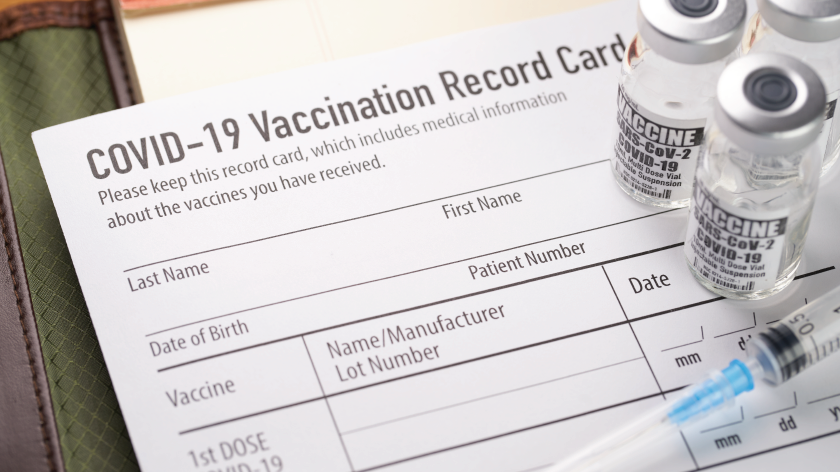With three COVID-19 vaccines currently authorized for use in the United States, health experts anticipate that vaccines will become more widely available in the coming months, as pharmaceutical companies work to increase their production and manufacturing capacity, and as states are directed to expand eligibility to include all adults by May 1.
National surveys have shown people’s willingness to receive the vaccine has been steadily increasing, and our own member data reflects this as well, with more than two-thirds of Vitality members planning to receive or having already received the vaccine. However, currently about 30% of Vitality members are undecided or don’t plan to get a COVID-19 vaccine, with potential side effects being cited as one reason for vaccine hesitancy.
Here’s what you need to know about the COVID-19 vaccine and its potential side effects.
Common Symptoms or Side Effects
While many people have not experienced side effects, the COVID-19 vaccine has been reported to cause short-term side effects in others. Reports from the Food & Drug Administration (FDA) on the clinical trial data from Pfizer, Moderna and Johnson & Johnson all indicated that the three most commonly-reported side effects were arm pain, fatigue and headache. Other reported side effects included chills, muscle or joint pain, and fever. While uncomfortable, these side effects are minor, and when they did occur, they only lasted a few days after vaccination.
The Immune Response: Our Bodies at Work
To understand why we may experience side effects from a vaccination, it is important to first understand how our bodies react when we get sick. When our bodies get infected with a virus, such as the one that causes COVID-19, the virus attacks our bodies’ cells and begin to multiply. Our body then begins to fight the infection by mounting an immune response – it is this process that can cause symptoms or side effects. For example, when you get sick with a common cold virus, you may experience a sore throat, congestion, or a runny nose. These are all effects of your body’s immune system working to fight the infection. The first time you are infected with a virus, your body needs time to develop the tools it needs to fight the virus. But after the infection, your immune system remembers how to protect your body against that disease for next time.
The COVID-19 vaccine is helping our bodies develop the tools they need to fight against the virus without us having to get the illness first. The different vaccines (Pfizer’s and Moderna’s are mRNA vaccines, while Johnson & Johnson’s is a vector vaccine) work in different ways to teach our bodies to recognize and protect us from COVID-19, but all the vaccines teach our bodies how to fight the virus. The symptoms you may experience from the vaccine are a result of our immune systems learning how to protect us from COVID-19. This is also why many people have reported stronger side effects after the second dose than the first. After the first dose, our bodies are primed to recognize and fight the proteins in the virus, so they exhibit a stronger immune response by the time of the second dose. This is also why younger people appear to be more likely to experience side effects than older adults. Younger people typically have stronger responses, as our immune system responses decline with age.
It typically takes a few weeks after vaccination for the body to fully learn how to fight the virus in the future. This is why it is possible for someone to test positive for COVID-19 in the early days after they have been vaccinated. The body may still be in the process of building immunity against the virus. You cannot get COVID-19 from the COVID-19 vaccine. It is for this reason you are not considered to be “fully vaccinated” until two weeks after the second dose of the Pfizer or Moderna vaccine, or two weeks after the single-dose Johnson & Johnson vaccine.
A Small Price to Pay
While side effects like sore arms, fatigue and headache are unpleasant and may require you to take it easy for a day or two following the vaccine, rest assured that these are good signs that your body is developing antibodies as part of its immune response and is doing exactly what it is supposed to be doing in order to protect you against the virus. And do not worry if you don’t experience any side effects – not everyone will! All our bodies will respond differently. The important thing is to remember that your body is doing exactly what it needs to do to protect you, whether you can feel it or not.
The publication of the new CDC guidelines for fully vaccinated people is a great sign that we are well on our way to fighting this pandemic and being able to go back to work and school and to hug our friends and family members again. The side effects from the COVID-19 vaccine are a small price to pay for the protection it affords us, our families, and our communities.
For more information on what know about your COVID-19 vaccine appointment, click here.
For more information about possible side effects and how to manage them, click here.
Lianne Jacobs, Product Analyst, has a master’s degree in public health from Yale University. She is the only indoor cycling instructor who can’t ride a bike. She enjoys traveling the world, laughing at her own jokes, and tricking her husband into eating baked goods made with hidden vegetables.






